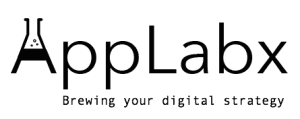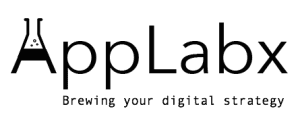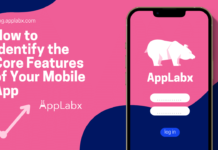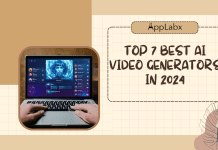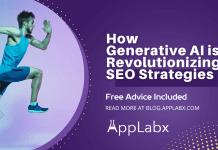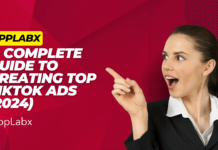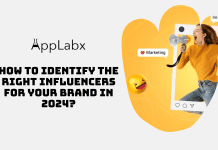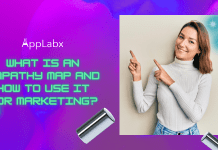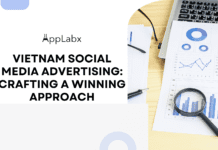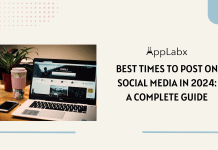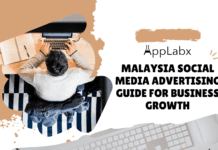Key Takeaways
- Inbound marketing attracts customers organically through valuable, relevant content tailored to their needs.
- It builds trust and long-term relationships by guiding prospects through the buyer’s journey.
- Implementing a clear strategy with SEO, content creation, and lead nurturing drives sustainable business growth.
In today’s increasingly digital and customer-centric marketplace, businesses face a fundamental shift in how they attract, engage, and retain customers. Traditional advertising methods—billboards, cold calls, banner ads—are losing their effectiveness as audiences grow more sophisticated and less tolerant of interruption-based marketing. Consumers now demand value-driven experiences and actively seek out brands that educate, inspire, and solve their problems without being pushy or invasive. This changing behavior has fueled the rise of inbound marketing, a powerful, long-term strategy centered on attracting customers organically by delivering relevant and helpful content at every stage of the buyer’s journey.

Inbound marketing is not just a buzzword—it’s a philosophy, methodology, and proven growth engine that aligns with how people actually make buying decisions in the digital age. Unlike outbound strategies that chase customers down, inbound marketing earns their attention and trust by offering valuable insights through channels like search engines, blogs, social media, email, and more. It empowers brands to position themselves as thought leaders, build lasting relationships, and convert strangers into loyal advocates over time.
The relevance of inbound marketing has only grown stronger in 2025, especially as privacy regulations tighten, third-party cookies fade, and consumers gain more control over their digital experiences. Today, companies must earn their visibility—not buy it. Inbound marketing enables this by focusing on creating meaningful content that is discoverable, shareable, and genuinely useful. Whether it’s a blog post answering a pressing question, a YouTube video demonstrating how to solve a problem, or an email series nurturing a lead through their decision-making process, every inbound touchpoint is designed to deliver value.
This beginner’s guide is designed to demystify the concept of inbound marketing and provide a comprehensive roadmap for how you can use it to attract customers organically. We’ll cover everything from the core principles and components to the tools, best practices, and real-world examples that make inbound marketing a vital strategy for modern businesses.
Whether you’re a startup founder, small business owner, solo entrepreneur, or marketing professional, understanding and implementing inbound marketing can help you future-proof your business and create a reliable engine for sustainable growth. By the end of this guide, you’ll have a clear understanding of what inbound marketing is, why it works, and how to start building your own inbound strategy from the ground up.
But, before we venture further, we like to share who we are and what we do.
About AppLabx
From developing a solid marketing plan to creating compelling content, optimizing for search engines, leveraging social media, and utilizing paid advertising, AppLabx offers a comprehensive suite of digital marketing services designed to drive growth and profitability for your business.
AppLabx is well known for helping companies and startups use Inbound Marketing to drive web traffic to their websites and web apps.
At AppLabx, we understand that no two businesses are alike. That’s why we take a personalized approach to every project, working closely with our clients to understand their unique needs and goals, and developing customized strategies to help them achieve success.
If you need a digital consultation, then send in an inquiry here.
What is Inbound Marketing? A Beginner’s Guide to Attracting Customers Organically
- How Inbound Marketing Works
- Core Components of Inbound Marketing
- Benefits of Inbound Marketing
- Inbound Marketing Funnel Explained
- Tools and Platforms for Inbound Marketing
- Common Inbound Marketing Mistakes to Avoid
- Getting Started with Your Inbound Marketing Strategy
1. How Inbound Marketing Works
Inbound marketing operates on a simple yet powerful premise: attract, engage, and delight customers by delivering valuable content tailored to their needs at each stage of their buying journey. Instead of pushing products or services aggressively, inbound marketing pulls prospects toward your brand by offering helpful, relevant, and timely information. This customer-first approach builds trust, nurtures leads, and turns strangers into loyal promoters over time.
Below is a comprehensive breakdown of how inbound marketing works, along with actionable examples, charts, and frameworks to help you better understand the methodology.
The Inbound Marketing Flywheel: Attract, Engage, Delight
HubSpot popularized the flywheel model as a replacement for the traditional sales funnel. It emphasizes continuous growth through customer satisfaction and advocacy.
1. Attract: Drawing in the Right Audience
- Goal: Get discovered by prospects who are actively searching for solutions to their problems.
- Strategies:
- Search Engine Optimization (SEO): Use keyword-targeted blog posts to appear in search results.
- Social Media Marketing: Share valuable content that resonates with your target persona.
- Educational Content: Publish how-to guides, eBooks, webinars, and infographics.
Example: A health supplement brand publishes a blog post titled “Top 10 Natural Ways to Boost Immunity” targeting the keyword “how to improve immunity naturally”.
2. Engage: Converting Visitors into Leads
- Goal: Build relationships and guide visitors toward a conversion through value-driven interactions.
- Strategies:
- Landing Pages: Offer free resources in exchange for contact information.
- Email Campaigns: Send targeted messages based on lead behavior or interest.
- Interactive Tools: Use calculators, quizzes, or assessments.
Example: A digital marketing agency offers a downloadable SEO Audit Template after users fill out a form.
3. Delight: Turning Leads into Loyal Customers and Promoters
- Goal: Provide ongoing value to customers post-purchase, encouraging them to return and refer others.
- Strategies:
- Customer Support: Use chatbots and support hubs.
- Loyalty Programs: Reward repeat customers with exclusive benefits.
- Feedback Loops: Collect reviews and testimonials to build credibility.
Example: An eCommerce store sends personalized emails with product care tips and invites for loyalty rewards.
Inbound Marketing and the Customer Journey
Inbound marketing maps directly onto the three main stages of the buyer’s journey: Awareness, Consideration, and Decision. Each phase requires a different type of content and messaging strategy.
| Stage | Customer Mindset | Content Types | Primary Goal |
|---|---|---|---|
| Awareness | “I have a problem or need.” | Blog posts, social media, checklists, videos | Educate and attract |
| Consideration | “I’m evaluating my options.” | Case studies, whitepapers, product comparisons | Engage and build trust |
| Decision | “I’m ready to make a choice.” | Demos, pricing pages, testimonials, consultations | Convert and reassure |
Content Strategy in Action: Mapping to the Funnel
A strong inbound strategy aligns content creation with every stage of the marketing funnel.
Top of Funnel (TOFU) – Attract
- Audience: Strangers and cold traffic
- Tactics:
- SEO-optimized blog articles
- Educational YouTube videos
- Viral social media posts
Example: “Beginner’s Guide to Budgeting” blog post attracts traffic for a personal finance app.
Middle of Funnel (MOFU) – Engage
- Audience: Leads and engaged prospects
- Tactics:
- Email nurturing campaigns
- eBooks, whitepapers
- Webinars and live Q&As
Example: A SaaS brand sends a series of automated emails after a prospect downloads a CRM Buying Guide.
Bottom of Funnel (BOFU) – Convert & Delight
- Audience: Marketing-qualified leads (MQLs) and customers
- Tactics:
- Product demos
- Case studies and testimonials
- Special offers and onboarding guides
Example: A B2B service provider offers a free 30-minute consultation to convert leads into clients.
Inbound Marketing Funnel vs. Outbound Marketing Funnel
A side-by-side comparison of inbound and outbound approaches can help you understand the strategic difference in execution.
| Aspect | Inbound Marketing | Outbound Marketing |
|---|---|---|
| Strategy Focus | Pull customers with value | Push messages to a broad audience |
| Customer Interaction | Permission-based | Interruptive |
| Channels Used | SEO, content, social media, email | Cold calling, print ads, TV, display ads |
| Cost Efficiency | Cost-effective over time | High upfront costs |
| Lead Quality | Highly qualified leads | Lower-quality, less engaged leads |
| Tracking and Measurement | Easily measurable via digital analytics | Difficult to measure ROI |
Key Technologies Powering Inbound Marketing
To execute an effective inbound strategy, leveraging the right tools is critical. Here’s a breakdown of essential technologies:
| Function | Recommended Tools | Purpose |
|---|---|---|
| Content Management | WordPress, HubSpot CMS | Create and manage blog and landing pages |
| SEO Optimization | Ahrefs, SEMrush, Google Search Console | Keyword research, backlink analysis, performance tracking |
| Email Automation | Mailchimp, ConvertKit, ActiveCampaign | Lead nurturing and segmentation |
| Social Scheduling | Buffer, Hootsuite, Sprout Social | Automate and analyze social media performance |
| CRM and Lead Tracking | HubSpot, Salesforce, Zoho CRM | Manage contacts and measure funnel performance |
Performance Metrics That Drive Growth
To ensure success, every inbound marketing activity must be tracked and optimized based on performance data.
Key Metrics to Monitor
- Website Traffic (organic, referral, direct)
- Click-Through Rate (CTR) on content and CTAs
- Conversion Rates (landing pages, lead magnets)
- Email Open and Engagement Rates
- Customer Lifetime Value (CLV)
- Cost Per Lead (CPL)
- ROI from inbound efforts
Real-Life Example: How a SaaS Company Grew Using Inbound Marketing
Company: SaaS platform for remote project collaboration
Challenge: Low visibility and high cost-per-click in paid ads
Inbound Strategy:
- Launched a blog targeting long-tail search queries like “how to manage remote teams”
- Created a free project planning template as a lead magnet
- Ran nurturing email campaigns tailored to job titles (project managers, HR, etc.)
- Shared weekly content via LinkedIn and Twitter
Results After 6 Months:
- 220% increase in organic traffic
- 4,000+ new email subscribers
- 18% lead-to-customer conversion rate from inbound leads
- Reduced customer acquisition cost (CAC) by 43%
By understanding how inbound marketing works, businesses can move away from short-term sales tactics and start investing in sustainable growth engines. The methodology not only attracts high-intent customers but also nurtures long-term relationships that drive repeat business and organic advocacy. In the sections ahead, we’ll explore the tools, strategies, and actionable steps needed to implement your own inbound marketing plan effectively.
2. Core Components of Inbound Marketing
Inbound marketing is built on a foundation of interconnected strategies and tools that work together to attract, engage, and delight customers. Understanding the core components of inbound marketing is essential for building a successful and sustainable marketing engine that aligns with how today’s consumers search for and engage with brands.
Each component plays a unique role in guiding potential customers through the buyer’s journey—from discovering your brand to becoming loyal advocates. Below is an in-depth breakdown of the most important components of inbound marketing, complete with examples, charts, and practical insights.
1. Content Marketing
Definition: Content marketing involves creating and distributing valuable, relevant, and consistent content to attract and retain a clearly defined audience—and ultimately drive profitable customer action.
Key Elements
- Blogging:
- Foundation of most inbound strategies
- SEO-optimized and informative
- Topics should align with target persona’s pain points
- Example: A fitness brand publishes “Beginner’s Guide to Home Workouts”
- Video Content:
- Boosts engagement and dwell time
- Ideal for YouTube, TikTok, and product pages
- Example: A SaaS company creates explainer videos for onboarding
- Downloadable Resources:
- eBooks, guides, templates, whitepapers
- Used for lead generation through landing pages
- Example: A marketing agency offers a “2025 Content Calendar Template”
- Infographics and Visual Content:
- Makes complex data more digestible and shareable
- Performs well on social media and blogs
Content Matrix: Purpose vs. Funnel Stage
| Purpose | TOFU | MOFU | BOFU |
|---|---|---|---|
| Educate | Blog posts, infographics | eBooks, whitepapers | Product comparison charts |
| Engage | Podcasts, webinars | Email newsletters, explainer videos | Free trials, demos |
| Convert | Lead magnets, landing pages | Case studies, testimonials | Pricing guides, consultations |
2. Search Engine Optimization (SEO)
Definition: SEO enhances your website’s visibility in search engines, helping attract qualified traffic organically by aligning your content with user intent.
Key SEO Focus Areas
- On-Page SEO:
- Optimize title tags, meta descriptions, headings
- Use target keywords naturally within content
- Include internal and external links
- Technical SEO:
- Site speed optimization
- Mobile responsiveness
- Schema markup
- XML sitemaps and proper indexing
- Off-Page SEO:
- Earning backlinks from reputable domains
- Guest posting on authority blogs
- Social shares and brand mentions
- Keyword Strategy:
- Long-tail keywords for niche visibility
- Focus on search intent (informational, navigational, transactional)
Example:
A home improvement company ranks for “how to choose energy-efficient windows” through a blog post optimized with schema, internal links, and expert tips.
3. Social Media Marketing
Definition: Social media marketing is the process of using platforms like Facebook, LinkedIn, Instagram, and Twitter to promote your brand, distribute content, and engage with your audience.
Benefits
- Increases brand awareness and reach
- Drives traffic to owned media (blogs, landing pages)
- Builds community and customer loyalty
Channel-Specific Strategies
- LinkedIn:
- B2B content, industry insights, whitepaper promotions
- Example: A cybersecurity firm shares thought leadership posts and case studies
- Instagram:
- Visual storytelling, reels, behind-the-scenes
- Example: A skincare brand showcases user-generated content and tutorials
- TikTok/YouTube Shorts:
- Short, informative, and entertaining videos
- Great for tutorials, quick hacks, and product demos
Posting Matrix: Format vs. Goal
| Format | Brand Awareness | Lead Generation | Customer Engagement |
|---|---|---|---|
| Short Videos | High | Medium | High |
| Image Posts | Medium | Low | Medium |
| LinkedIn Articles | Medium | High | Low |
| Live Sessions | High | Medium | High |
4. Email Marketing and Lead Nurturing
Definition: Email marketing delivers targeted messages directly to your audience’s inbox, allowing you to build relationships and guide them through the buyer’s journey.
Tactics for Success
- Segmentation:
- Divide email lists by behavior, location, or purchase history
- Example: An eCommerce site sends abandoned cart emails based on product category
- Drip Campaigns:
- Automated email sequences triggered by actions or timelines
- Example: Welcome series for new subscribers with increasing value in each email
- Personalization:
- Use names, interests, and dynamic content blocks
- Increases open rates and engagement
- Lead Scoring:
- Assign points based on engagement to qualify leads
- Helps determine when to pass a lead to sales
Sample Email Funnel Structure
| Stage | Email Type | Goal |
|---|---|---|
| New Subscriber | Welcome Series | Build trust, introduce brand |
| Engaged Lead | Educational Content | Provide value, showcase expertise |
| High-Intent Prospect | Demo/Consultation Offer | Prompt action, schedule conversion call |
| Existing Customer | Upsell/Cross-sell, Referral Programs | Drive loyalty and retention |
5. Conversion Rate Optimization (CRO)
Definition: CRO is the practice of increasing the percentage of website visitors who take a desired action—such as filling out a form, signing up, or making a purchase.
Key CRO Techniques
- Clear Call-to-Actions (CTAs):
- Place prominently on landing pages and blog posts
- A/B test different messaging
- Landing Page Optimization:
- Keep copy concise and benefit-driven
- Use visual hierarchy and minimal distractions
- Forms and Lead Magnets:
- Shorten forms to reduce friction
- Offer compelling downloads like templates or exclusive reports
- Heatmaps and Analytics:
- Tools like Hotjar and Google Analytics to identify drop-off points
Conversion Optimization Table
| Element | Best Practice | Impact on Conversion |
|---|---|---|
| CTA Buttons | Use contrasting colors and active verbs | Increases click-through rate |
| Headlines | Address pain points and offer solutions | Enhances message relevance |
| Forms | Ask for only essential information | Reduces bounce rate |
| Testimonials/Trust Badges | Display customer reviews or guarantees | Builds credibility and trust |
Conclusion: Integrating Core Components for Success
Inbound marketing is not about a single channel or tactic. It’s a holistic ecosystem where content, SEO, social media, email, and CRO work in tandem to deliver a seamless and personalized experience across the customer journey.
By mastering these core components:
- You build trust and authority in your industry
- You attract qualified leads without relying on ad spend
- You increase customer retention and lifetime value
3. Benefits of Inbound Marketing
Inbound marketing offers a long-term, scalable, and cost-effective way to grow a brand by focusing on value-driven, customer-centric strategies. Unlike outbound marketing—which often interrupts the consumer experience—inbound builds trust, authority, and relationships by delivering solutions people are actively seeking. In this section, we’ll explore the full range of benefits inbound marketing provides, from lead generation and brand visibility to ROI and long-term sustainability.
1. Generates High-Quality Leads
Why It Matters:
Inbound marketing attracts people who are already interested in your niche, increasing the likelihood that they convert into leads and eventually customers.
Key Points:
- Targeted Traffic: SEO and content marketing bring in users searching for specific information or products.
- Lead Qualification: Visitors engage with gated content (e.g., eBooks, free tools), signaling intent.
- Lower Cost per Lead: Content assets generate leads continuously without recurring ad costs.
Example:
A B2B software company offers a downloadable “CRM Buyer’s Guide” and receives 2,000 qualified leads in six months with no additional ad spend.
2. Builds Long-Term Brand Authority and Trust
Why It Matters:
Inbound content—especially educational and value-driven material—positions your business as a reliable expert in your industry.
Key Points:
- Thought Leadership: Regular blog posts, webinars, and research reports build credibility.
- Consistent Engagement: Email newsletters and social media posts keep your brand top-of-mind.
- Trust Signals: Testimonials, case studies, and transparent messaging increase buyer confidence.
Authority Content Framework
| Type of Content | Trust Signal Provided | Where to Use |
|---|---|---|
| Expert Blog Articles | Demonstrates industry knowledge | Blog, LinkedIn, Medium |
| Case Studies | Shows real-world success | Sales decks, landing pages |
| Testimonials/Reviews | Social proof from peers | Product pages, checkout process |
| Research/Reports | Provides proprietary data and insights | Lead magnets, press coverage |
3. Improves Organic Visibility and SEO Rankings
Why It Matters:
Inbound marketing improves your search engine visibility, driving organic traffic that compounds over time and lowers dependency on paid media.
Key Points:
- Content Indexed by Search Engines: Every new blog or page increases your chance of ranking for long-tail keywords.
- Backlink Opportunities: High-quality content attracts natural backlinks, improving domain authority.
- Sustained ROI: Evergreen content continues to perform months or even years after publication.
Example:
A financial advisor writes an article titled “How to Retire Early with Index Funds”, which ranks on Google’s first page and drives 10,000 monthly visits consistently.
4. Enhances Customer Experience and Journey Alignment
Why It Matters:
Inbound marketing meets customers where they are in their journey, offering solutions tailored to their specific needs.
Key Points:
- Personalized Experiences: Use behavior-based emails and dynamic website content.
- Value at Every Stage: From awareness (blogs) to decision (case studies), every step is content-supported.
- Self-Education: Customers prefer to educate themselves—content supports that autonomy.
Customer Journey Alignment Matrix
| Stage | User Intent | Best Content Type | Goal |
|---|---|---|---|
| Awareness | Identify a problem | Blog posts, checklists, infographics | Educate and attract |
| Consideration | Evaluate solutions | Case studies, comparison charts | Build trust and engagement |
| Decision | Ready to purchase | Demos, free trials, pricing pages | Convert and reassure |
| Loyalty | Deepen relationship | Email updates, exclusive content | Retain and upsell |
5. Lowers Customer Acquisition Cost (CAC)
Why It Matters:
Inbound strategies are cost-efficient because once content is created and optimized, it continues to attract leads without recurring spend.
Key Points:
- Scalable Content Assets: One high-performing blog can attract leads for years.
- Automated Lead Nurturing: Email sequences and CRM tools reduce manual work.
- Reduced Ad Dependency: Lower need for high-cost, low-ROI paid campaigns.
Cost Comparison Chart
| Marketing Method | Average Cost per Lead | Sustainability | Scalability |
|---|---|---|---|
| Paid Ads (PPC/Social) | $120 – $300 | Short-term | Medium (depends on budget) |
| Traditional Outbound | $200 – $500 | Low | Low |
| Inbound Marketing | $30 – $100 | High (evergreen) | High |
6. Strengthens Customer Retention and Loyalty
Why It Matters:
Inbound marketing doesn’t stop after a sale—it continues to deliver value post-purchase, enhancing satisfaction and promoting repeat business.
Key Points:
- Email Onboarding Sequences: Educate users on how to get the most from your product.
- Loyalty Campaigns: Offer rewards and personalized recommendations.
- Community Engagement: Use forums, webinars, and feedback loops to keep customers engaged.
Example:
An online course provider sends monthly updates with free tutorials and bonus modules, leading to a 30% increase in customer lifetime value.
7. Provides Measurable and Actionable Analytics
Why It Matters:
Inbound marketing efforts are easily trackable, enabling data-driven decisions that improve ROI over time.
Key Points:
- Traffic Analytics: Measure which content drives the most visits.
- Lead Attribution: Identify which channels and assets generate the best leads.
- Conversion Tracking: Optimize CTAs, landing pages, and form completions.
Key Performance Indicators (KPIs)
| Metric | Why It Matters | Tools to Use |
|---|---|---|
| Organic Traffic | Measures content reach | Google Analytics, Search Console |
| Conversion Rate | Evaluates content performance | HubSpot, Unbounce |
| Cost Per Lead (CPL) | Assesses financial efficiency | Google Ads, Facebook Ads Manager |
| Email Open/Click Rate | Indicates lead engagement | Mailchimp, ActiveCampaign |
| Customer Lifetime Value (CLV) | Measures long-term impact | CRM platforms, custom dashboards |
8. Supports Omnichannel Marketing Integration
Why It Matters:
Inbound marketing can be integrated across channels—SEO, email, social, and content—creating a consistent and seamless experience for users.
Key Points:
- Cross-Promotion: Share blog content through newsletters and social platforms.
- Retargeting with Context: Use user behavior to serve the right content via remarketing.
- Consistent Messaging: Unified brand voice across all customer touchpoints.
9. Builds Competitive Advantage in Your Industry
Why It Matters:
Brands that deliver consistent, high-quality, and relevant content stand out in a crowded marketplace and outperform competitors in organic channels.
Key Points:
- Dominates Search Results: More content means more SERP visibility.
- Creates Brand Recall: Useful content leads to repeated brand exposure.
- Influences Purchase Decisions: Educational content shortens the sales cycle.
Example:
A legal tech startup creates a blog series on “Navigating Data Privacy Laws by Region”, outranking larger competitors and doubling inbound lead volume.
Conclusion: A High-ROI, Future-Proof Strategy
Inbound marketing delivers an unmatched mix of cost efficiency, customer loyalty, organic growth, and brand authority. It’s not just a marketing tactic—it’s a growth philosophy that aligns perfectly with today’s empowered consumers. Whether you’re a startup, small business, or enterprise, embracing the inbound methodology positions your brand for sustainable success in a privacy-first, content-driven digital economy.
4. Inbound Marketing Funnel Explained
The inbound marketing funnel is a structured, strategic approach that guides prospects through various stages of their buyer’s journey—from discovering your brand to becoming loyal customers and advocates. Unlike the traditional marketing funnel that emphasizes pushing messages out, the inbound funnel is built on attraction, engagement, and value delivery. Each stage of the funnel corresponds to specific consumer behaviors and content types, making it critical to understand how to align your strategy accordingly.
Below is a comprehensive breakdown of the inbound marketing funnel, complete with stages, key tactics, relevant examples, and data visualization tools to help you optimize your inbound efforts.
Overview of the Inbound Funnel
Three Core Stages
| Stage | Goal | User Intent | Primary Strategy |
|---|---|---|---|
| Top of Funnel (TOFU) | Attract potential customers | Searching for information | Content marketing & SEO |
| Middle of Funnel (MOFU) | Engage and educate leads | Comparing options | Lead nurturing & gated assets |
| Bottom of Funnel (BOFU) | Convert into customers | Ready to purchase | Sales enablement & trust content |
1. Top of Funnel (TOFU): Attracting Strangers
Objective: Generate awareness and attract potential leads through educational and search-optimized content.
Key Characteristics:
- Prospects are unaware of your brand
- They are trying to solve a problem or answer a question
- Focus on providing value, not selling
Effective TOFU Strategies:
- Blog Articles:
- SEO-optimized with informational long-tail keywords
- Example: “How to Create a Digital Marketing Strategy from Scratch”
- Infographics and Visual Guides:
- Easily shareable on social media and Pinterest
- Summarize complex topics
- Social Media Content:
- Short-form video, carousels, polls, and memes to spark curiosity
- Free Tools and Quizzes:
- Example: HubSpot’s Website Grader or Neil Patel’s SEO Analyzer
Performance Metrics:
- Organic traffic volume
- Social shares and impressions
- Bounce rate and session duration
2. Middle of Funnel (MOFU): Engaging Visitors and Converting to Leads
Objective: Convert visitors into leads by offering valuable resources in exchange for contact information.
Key Characteristics:
- Prospects know your brand and are evaluating solutions
- They want in-depth content and proof of credibility
- Focus on nurturing trust and solving pain points
Effective MOFU Strategies:
- Gated Content (Lead Magnets):
- eBooks, checklists, templates, whitepapers
- Example: “Free Content Calendar Template for 2025”
- Webinars and Live Demos:
- Position your brand as a thought leader
- Use follow-up emails for continued engagement
- Case Studies and Success Stories:
- Real-world results build trust and credibility
- Include data, visuals, and client testimonials
- Email Drip Campaigns:
- Automated follow-ups based on user behavior
- Deliver personalized content and offers
Lead Nurturing Tactics Matrix
| Content Type | Format | Goal | Use Case |
|---|---|---|---|
| eBooks | Educate in detail | Strategic guides or how-tos | |
| Webinars | Live or recorded | Establish thought leadership | Expert panels, tutorials, AMA sessions |
| Case Studies | Written or video | Build social proof | Showcasing industry-specific outcomes |
| Email Sequences | Automated emails | Maintain engagement | Based on form submissions or actions |
Performance Metrics:
- Conversion rate on landing pages
- Email open and click-through rates
- Lead quality and engagement level
3. Bottom of Funnel (BOFU): Converting Leads into Customers
Objective: Turn qualified leads into paying customers through personalized, persuasive content and offers.
Key Characteristics:
- Prospects are ready to make a decision
- They’re comparing you with competitors
- Trust, urgency, and ease of action are key
Effective BOFU Strategies:
- Free Trials or Consultations:
- Eliminate risk and encourage product experience
- Example: A SaaS company offers a 14-day trial with onboarding support
- Product Comparison Pages:
- Transparent and SEO-optimized
- Help users evaluate based on features and price
- Customer Testimonials and Reviews:
- Social proof to reduce hesitation
- Use quotes, videos, or case study snippets
- Discount Offers or Limited-Time Deals:
- Create urgency and increase conversions
Example Call-to-Action Types by BOFU Stage
| CTA Type | When to Use | Conversion Goal |
|---|---|---|
| “Book a Free Demo” | For service-based businesses | Sales call scheduling |
| “Start Free Trial” | For software or tools | Product experience |
| “Download Pricing Sheet” | For detailed evaluation | Lead handoff to sales |
| “Compare Us vs. X” | When competitive edge is important | Brand trust and positioning |
Performance Metrics:
- Free trial/demo signups
- Sales conversion rate
- Time-to-close and deal velocity
4. Post-Funnel: Delighting Customers and Driving Advocacy
Objective: Build loyalty and encourage satisfied customers to become brand advocates.
Key Characteristics:
- Post-purchase engagement
- Customers are looking for continued value and support
Effective Strategies:
- Onboarding Emails and Guides:
- Walk users through product features and benefits
- Customer Satisfaction Surveys (NPS, CSAT):
- Gain insights for future improvement
- Loyalty and Referral Programs:
- Reward repeat purchases and referrals
- Community Building:
- Facebook groups, forums, VIP customer webinars
Customer Retention Funnel Add-On
| Stage | Tactic | Objective |
|---|---|---|
| Activation | Onboarding materials | Ensure users get immediate value |
| Retention | Regular updates and tips | Keep customers engaged and informed |
| Advocacy | Referral program | Turn customers into promoters |
| Feedback | Surveys and feedback loops | Improve experience and offerings |
Funnel Optimization Tips
Optimize Based on Data
- Use tools like HubSpot, Google Analytics, and Hotjar to identify friction points
- A/B test headlines, CTAs, email subject lines, and lead magnets
Personalize Content Across the Funnel
- Segment users based on behavior, source, and funnel stage
- Dynamic content (using CMS or CRM) increases engagement
Align Sales and Marketing Teams
- Share data insights regularly
- Use lead scoring models to determine sales-readiness
Visual Summary: Inbound Marketing Funnel Flowchart
Attract (TOFU)
└── SEO Blogs
└── Social Posts
└── Infographics
↓
Engage (MOFU)
└── eBooks & Webinars
└── Email Campaigns
└── Case Studies
↓
Convert (BOFU)
└── Free Trials
└── Product Comparisons
└── Customer Reviews
↓
Delight
└── Onboarding Guides
└── Loyalty Programs
└── Feedback Surveys
Conclusion: Building a Strategic Funnel for Growth
A well-structured inbound marketing funnel not only guides prospects through their buying journey—it enhances every interaction they have with your brand. By aligning your content, messaging, and offers with each stage of the funnel, you can significantly improve lead quality, conversion rates, and customer satisfaction.
Understanding and optimizing each layer of the inbound funnel ensures your marketing strategy is sustainable, scalable, and rooted in delivering real value—the cornerstone of inbound success.
5. Tools and Platforms for Inbound Marketing
Implementing a successful inbound marketing strategy requires a robust technology stack that enables marketers to attract, engage, convert, and delight prospects efficiently. From content creation and SEO optimization to email automation and CRM integration, the right tools can significantly streamline workflows, boost ROI, and enhance user experience. In this section, we break down the essential tools and platforms for each stage of the inbound marketing funnel, along with key features, use cases, and comparisons.
1. Content Creation and Management Tools
Purpose: To help create, publish, and manage high-quality content across multiple channels.
Popular Tools:
- WordPress:
- Widely used CMS platform for blogs and landing pages
- SEO-friendly plugins like Yoast and Rank Math
- Highly customizable with themes and page builders
- HubSpot CMS:
- Integrated with marketing automation and CRM
- Drag-and-drop editor, A/B testing, SEO suggestions
- Smart content personalization features
- Canva:
- Easy-to-use visual design tool
- Ideal for infographics, social media posts, and content upgrades
- Includes pre-made templates for blogs and email banners
Comparison Table: CMS Platforms
| Platform | Ease of Use | SEO Features | Best For | Cost |
|---|---|---|---|---|
| WordPress | Moderate | High (with plugins) | Bloggers & startups | Free + plugins |
| HubSpot CMS | Easy | Built-in SEO tools | Businesses using HubSpot | Paid |
| Webflow | Moderate | Good | Design-heavy sites | Paid |
2. SEO and Keyword Research Tools
Purpose: To optimize content for search engines and target the right keywords for organic growth.
Essential Tools:
- SEMrush:
- Keyword research, site audits, backlink analysis
- Tracks rankings and monitors competitors
- Content optimization suggestions
- Ahrefs:
- Best for backlink audits and competitor research
- Robust keyword explorer and SERP analysis
- Content Gap and Top Pages features
- Google Search Console:
- Free tool to monitor website performance in Google
- Identifies index issues and search impressions
- Essential for technical SEO
Keyword Research Tool Matrix
| Tool | Keyword Volume Accuracy | Competitor Insights | Ease of Use | Free Version |
|---|---|---|---|---|
| SEMrush | Very Accurate | Advanced | Easy | Limited |
| Ahrefs | Very Accurate | Advanced | Moderate | No |
| Ubersuggest | Good | Moderate | Very Easy | Yes |
3. Email Marketing and Automation Platforms
Purpose: To nurture leads through personalized, automated email sequences and trigger-based communications.
Top Platforms:
- Mailchimp:
- Easy drag-and-drop builder
- Audience segmentation and behavioral triggers
- Basic automation workflows for beginners
- ActiveCampaign:
- Advanced automation builder and CRM integration
- Lead scoring and dynamic content
- Excellent for drip campaigns and lead nurturing
- ConvertKit:
- Designed for creators and bloggers
- Visual automations and tag-based segmentation
- High deliverability rates
Email Marketing Features Comparison
| Platform | Best For | Automation Level | CRM Features | Pricing Model |
|---|---|---|---|---|
| Mailchimp | Beginners & SMBs | Basic to Moderate | Basic CRM | Free + Paid Tiers |
| ActiveCampaign | Advanced Marketers | Advanced | Full CRM | Paid (usage-based) |
| ConvertKit | Content Creators | Moderate | Limited CRM | Free + Paid Tiers |
4. CRM and Lead Management Tools
Purpose: To store, track, and manage leads as they move through the inbound funnel.
Recommended CRMs:
- HubSpot CRM:
- Free to use with essential contact management tools
- Integration with email, forms, live chat, and sales pipeline
- Marketing Hub for advanced automation and segmentation
- Zoho CRM:
- Cost-effective solution for small to medium businesses
- Workflow automation, email insights, and analytics
- Integrates with marketing and sales tools
- Salesforce:
- Enterprise-grade CRM with customizable dashboards
- Powerful for managing complex sales pipelines
- Requires technical setup and budget
CRM Selection Matrix
| CRM Platform | Best For | Ease of Integration | Lead Scoring | Reporting Tools |
|---|---|---|---|---|
| HubSpot CRM | Small to medium teams | Excellent | Yes | Excellent |
| Zoho CRM | Budget-conscious SMBs | Good | Yes | Good |
| Salesforce | Large enterprise teams | Excellent | Advanced | Enterprise-grade |
5. Analytics and Reporting Tools
Purpose: To track, measure, and optimize inbound marketing performance across touchpoints.
Must-Have Tools:
- Google Analytics 4 (GA4):
- Tracks user behavior, conversions, and traffic sources
- Event-based tracking for full funnel insight
- Integrates with Google Ads and Search Console
- Hotjar:
- Heatmaps, user recordings, and session tracking
- Great for understanding website behavior
- Helps optimize UX for higher conversions
- Databox:
- All-in-one dashboard for inbound KPIs
- Pulls data from multiple tools (HubSpot, GA, Facebook Ads)
- Visual reports for team performance reviews
Analytics Dashboard Example
| KPI Category | Key Metrics | Platform to Track |
|---|---|---|
| Website Performance | Sessions, Bounce Rate, Avg. Time | Google Analytics |
| Lead Generation | Form Submissions, CTA Clicks | HubSpot, ActiveCampaign |
| Conversion Metrics | MQL to SQL, Trial Signups, Purchases | CRM, Email Platform |
| Engagement | Heatmaps, Scroll Depth | Hotjar |
6. Social Media and Promotion Tools
Purpose: To distribute content, engage followers, and track social ROI as part of the inbound strategy.
Top Platforms:
- Buffer:
- Schedule posts across major platforms
- Analyze performance with visual dashboards
- Collaboration tools for teams
- Hootsuite:
- Content planning, curation, and inbox management
- Track engagement and brand mentions
- Offers listening and monitoring tools
- Later:
- Focused on visual platforms (Instagram, Pinterest)
- Calendar view and hashtag suggestions
- Great for ecommerce and creatives
Content Promotion Plan Matrix
| Channel | Tool to Use | Best For | ROI Measurement |
|---|---|---|---|
| Facebook/Instagram | Later, Hootsuite | Visual content, ecommerce | Engagement Rate, Conversions |
| Buffer, Hootsuite | B2B and professional content | Click-Through Rate, Lead Quality | |
| Buffer | News and real-time engagement | Retweets, Impressions, Traffic |
7. Conversion Rate Optimization (CRO) Tools
Purpose: To improve landing page and content performance by enhancing user experience and removing friction.
Recommended CRO Tools:
- Unbounce:
- Landing page builder with A/B testing
- Pre-designed templates for lead capture
- Integrates with most CRMs and email tools
- Optimizely:
- A/B and multivariate testing tool
- Real-time personalization capabilities
- Best for enterprise experimentation
- Crazy Egg:
- Visual heatmaps and scroll tracking
- Identifies where users drop off or click
- Useful for improving content layout and CTAs
Conclusion: Building the Ultimate Inbound Tech Stack
A fully optimized inbound marketing strategy depends on the synergy between content, automation, analytics, and personalization tools. By carefully selecting the right platforms for each stage of the buyer’s journey, marketers can create highly targeted campaigns that attract qualified leads, convert them efficiently, and nurture them into long-term customers.
Whether you’re a solo marketer or part of a large team, the inbound ecosystem thrives on choosing tools that scale, integrate, and deliver actionable insights—helping your brand stay agile in a data-driven digital world.
6. Common Inbound Marketing Mistakes to Avoid
While inbound marketing is one of the most effective methods for attracting and nurturing leads organically, many businesses fall into costly traps that limit their success. Whether it’s ignoring data, failing to align content with buyer intent, or neglecting user experience, these missteps can derail your efforts and reduce ROI. This section outlines the most common inbound marketing mistakes to avoid, complete with practical examples and detailed frameworks.
1. Ignoring Buyer Personas
Why It Happens:
Many marketers either skip persona development or base their assumptions on guesswork rather than data.
Consequences:
- Low engagement with content
- Poor lead quality
- High bounce and unsubscribe rates
Avoid This By:
- Developing detailed personas based on actual customer interviews, surveys, and CRM data
- Tailoring content to specific pain points, goals, and channels preferred by each persona
Example:
If you’re targeting “freelance web developers,” creating content on “How to Scale a Remote Development Business” will resonate more than generic entrepreneurship advice.
Persona Matrix Example:
| Persona | Pain Points | Preferred Channels | Content Format |
|---|---|---|---|
| Startup Founder | Limited budget, scaling challenges | LinkedIn, Email | Case studies, webinars |
| Marketing Manager | Proving ROI, campaign tracking | Blogs, Google Search | Whitepapers, templates |
| Solo Freelancer | Time management, client acquisition | YouTube, Twitter | Short videos, tool reviews |
2. Producing Low-Quality or Irrelevant Content
Symptoms:
- Blog posts lack depth or originality
- Content doesn’t solve real user problems
- Keywords are stuffed unnaturally
Impact:
- Poor SEO performance
- Low dwell time and high exit rates
- Loss of credibility and trust
Solutions:
- Conduct SERP and competitor research before creating content
- Use expert insights, stats, and case studies to add authority
- Refresh and repurpose old content that underperforms
Content Quality Checklist Table:
| Checklist Item | Yes/No | Improvement Needed |
|---|---|---|
| Aligns with buyer intent | ||
| Includes data, visuals, or examples | Add charts, case studies, or quotes | |
| Optimized for target keyword | Ensure natural usage in headers and text | |
| Provides actionable takeaways | Include step-by-step guides or tips |
3. Lack of a Content Strategy and Calendar
Why It’s a Problem:
Without a structured plan, content becomes inconsistent, redundant, or misaligned with funnel stages.
Negative Outcomes:
- Missed publishing deadlines
- Uneven content coverage across buyer journey
- Difficulty tracking campaign effectiveness
Best Practices:
- Build an editorial calendar with monthly themes and funnel stage goals
- Map each content piece to a specific persona and buyer journey phase
- Use content audit tools like SEMrush or Screaming Frog to spot gaps
Content Calendar Sample:
| Week | Topic | Persona | Funnel Stage | Format |
|---|---|---|---|---|
| Week 1 | SEO Trends for Startups in 2025 | Startup Founder | Awareness | Blog Post |
| Week 2 | Free SEO Audit Template | Marketing Manager | Consideration | Downloadable |
| Week 3 | Case Study: 3x Organic Growth in 6 Months | Marketing Manager | Decision | Case Study |
| Week 4 | LinkedIn Ads vs. Google Ads for SaaS | Growth Marketer | Consideration | Comparison Post |
4. Failing to Nurture Leads Properly
Common Mistakes:
- One-off email campaigns with no automation
- Sending irrelevant content to leads at the wrong stage
- Overlooking lead segmentation and scoring
Results:
- Leads go cold due to lack of consistent touchpoints
- Low email open and click-through rates
- Poor MQL to SQL conversion rates
How to Fix It:
- Use marketing automation platforms (e.g., HubSpot, ActiveCampaign)
- Build behavior-based workflows (e.g., trigger follow-up emails after downloads)
- Implement lead scoring to prioritize high-intent leads
Lead Nurturing Funnel Example:
| Lead Stage | User Action | Email Content | CTA |
|---|---|---|---|
| Awareness | Downloaded SEO checklist | Educational series on SEO basics | Read blog or webinar signup |
| Consideration | Attended a webinar | Case study + comparison guide | Schedule a consultation |
| Decision | Requested a demo | Testimonials + pricing FAQ | Start a free trial |
5. Overlooking Technical SEO and Website UX
Mistakes Include:
- Slow-loading pages
- Broken internal links and redirects
- Poor mobile responsiveness
- Unclear CTAs and cluttered design
Impact:
- Lower rankings on search engines
- High bounce rates
- Reduced conversion rates
Solutions:
- Perform regular technical audits with tools like Screaming Frog, Google Search Console
- Optimize page speed using compression and caching
- Ensure responsive design and mobile usability
- Use heatmaps to improve CTA placement and navigation
Technical SEO Audit Checklist:
| Category | Check | Tool to Use |
|---|---|---|
| Page Speed | Page load time under 3s | Google PageSpeed Insights |
| Crawlability | No crawl errors or orphan pages | Screaming Frog |
| Mobile Friendliness | Fully responsive on all devices | Google Mobile-Friendly Test |
| Structured Data | Implemented for key pages | Schema Markup Validator |
6. Not Measuring or Analyzing Performance
Symptoms:
- No clear KPIs defined
- Relying solely on vanity metrics like impressions
- Disconnected data across platforms
Consequences:
- Inability to refine strategy based on results
- Wasted budget on underperforming channels
- Lack of ROI visibility for stakeholders
Recommendations:
- Set SMART goals for each campaign (e.g., 15% increase in organic traffic in 60 days)
- Build integrated dashboards with tools like Google Data Studio or Databox
- Track performance at each funnel stage (awareness, engagement, conversion)
Example KPI Framework:
| Funnel Stage | KPI | Tracking Tool |
|---|---|---|
| Attract | Organic traffic, keyword rankings | Google Analytics, Ahrefs |
| Engage | Time on page, bounce rate | Hotjar, GA4 |
| Convert | Lead form submissions, CTR | HubSpot, Google Tag Manager |
| Delight | NPS score, repeat conversions | Email software, CRM |
7. Relying Only on Organic Channels
The Issue:
Inbound marketing thrives on organic growth, but supplementing with paid channels can significantly amplify reach, especially in early growth stages.
Limitations:
- Slow traction for new businesses
- Missed retargeting opportunities
- Low exposure for high-value gated assets
Tactical Advice:
- Combine SEO efforts with PPC campaigns (e.g., promote high-converting blog posts with Google Ads)
- Use LinkedIn or Facebook ads to drive traffic to lead magnets
- Retarget blog visitors with mid-funnel content
Conclusion: Avoiding Pitfalls to Maximize Inbound ROI
To succeed with inbound marketing, it’s not just about doing the right things—it’s also about avoiding the wrong ones. From poorly defined personas to underutilized analytics and neglected UX, even small missteps can compound over time. Regularly auditing your strategy, leveraging the right tools, and staying aligned with your buyer’s journey are essential for sustainable growth.
Avoiding these mistakes ensures your inbound marketing engine remains efficient, scalable, and ready to convert traffic into loyal customers.
7. Getting Started with Your Inbound Marketing Strategy
Creating a successful inbound marketing strategy requires a clear roadmap rooted in audience understanding, content relevance, strategic distribution, and continuous optimization. This section provides a step-by-step guide to launching an inbound strategy that attracts, engages, and converts your ideal customers organically. Whether you’re a startup or an established business, the actionable steps below will help build a sustainable inbound foundation.
1. Define Your Business Objectives and KPIs
Why It Matters:
Without clear goals, your inbound strategy lacks direction and measurable success.
Action Steps:
- Align marketing goals with overall business objectives
- Define SMART goals (Specific, Measurable, Achievable, Relevant, Time-bound)
- Identify key performance indicators (KPIs) for each funnel stage
Example SMART Goal:
“Increase qualified website leads by 30% over the next 90 days through SEO-optimized blog content and downloadable resources.”
Sample KPI Matrix:
| Funnel Stage | Objective | KPI Example |
|---|---|---|
| Attract | Drive organic traffic | Monthly visitors, keyword rank |
| Engage | Increase user interaction | Time on site, bounce rate |
| Convert | Capture leads | Form submissions, CTA clicks |
| Delight | Nurture loyalty | Repeat visits, NPS score |
2. Build Detailed Buyer Personas
Purpose:
Understanding your ideal customer ensures your content speaks to their specific goals, challenges, and behaviors.
Steps to Create Buyer Personas:
- Analyze customer data from your CRM or analytics
- Conduct interviews or surveys with existing clients
- Segment personas by industry, role, goals, and objections
Sample Buyer Persona Template:
| Attribute | Example: “Tech Startup Founder” |
|---|---|
| Age / Gender | 30–45, Any |
| Industry / Role | Tech / CEO or Co-founder |
| Goals | Growth, visibility, funding |
| Challenges | Budget limits, hiring, competition |
| Preferred Channels | LinkedIn, Google, YouTube |
| Content Preferences | Case studies, industry trends, actionable guides |
3. Conduct a Content Audit and Gap Analysis
Why It’s Important:
Evaluating existing content helps identify what’s working, what needs improvement, and what’s missing entirely.
How to Perform an Audit:
- Use tools like Screaming Frog, SEMrush, or Ahrefs
- Categorize content by topic, funnel stage, and performance
- Identify gaps using a content matrix
Content Gap Matrix Example:
| Topic Area | Existing Content | Missing Content (Gap) | Recommended Action |
|---|---|---|---|
| SEO Basics | Blog: SEO 101 | Lead Magnet: “Free SEO Checklist” | Create downloadable PDF |
| Social Media Strategy | None | Blog, Infographic | Build awareness content |
| Conversion Tactics | Blog + Webinar | Email Nurture Series | Develop automated sequence |
4. Create a Content Strategy and Editorial Calendar
Key Components:
- Funnel-focused content plan (Top, Middle, Bottom)
- Channel-specific publishing strategy
- Consistency in tone, design, and messaging
Content Formats to Consider:
- Blog posts
- Ebooks and checklists
- Webinars and podcasts
- Infographics and videos
- Email campaigns
Sample Editorial Calendar:
| Week | Content Title | Buyer Persona | Funnel Stage | Format | Channel |
|---|---|---|---|---|---|
| Week 1 | “Inbound vs. Outbound Marketing” | SMB Owner | Awareness | Blog | Website, LinkedIn |
| Week 2 | “Marketing Funnel Template (Free)” | Marketing Manager | Consideration | PDF Download | Email, Landing Page |
| Week 3 | “How We Increased Leads by 60% in 90 Days” | SaaS Founder | Decision | Case Study | Blog, Paid Ads |
5. Optimize Your Website for Conversions
Conversion-Centric Elements:
- Clear value proposition above the fold
- Conversion-focused CTAs
- Fast-loading, mobile-optimized pages
- Live chat or chatbot for instant engagement
Tools to Use:
- Google Optimize for A/B testing
- HubSpot or Unbounce for landing pages
- Hotjar for heatmaps and user behavior tracking
Example CTA Placements:
| Page Type | CTA Example | CTA Goal |
|---|---|---|
| Homepage | “Get a Free SEO Audit” | Lead generation |
| Blog Post | “Download the Full Checklist” | Email capture |
| Product Page | “Schedule a Demo” | Sales conversion |
| Thank You Page | “Follow Us for More Tips” | Brand engagement |
6. Set Up Lead Capture and Nurturing Workflows
Lead Generation Tactics:
- Offer gated content (eBooks, guides)
- Use exit-intent popups or slide-ins
- Embed inline forms or CTA banners
Lead Nurturing Tips:
- Segment email lists by persona and funnel stage
- Personalize subject lines and body copy
- Use drip campaigns to educate and convert
Sample Email Nurturing Workflow:
| Trigger | Email 1 | Email 2 | Email 3 |
|---|---|---|---|
| User downloads eBook | Thank-you + blog links | Related case study | CTA: Book a strategy call |
| Signs up for newsletter | Welcome intro + popular content | Content roundup or tips | CTA: Download lead magnet |
| Attends a webinar | Summary + webinar replay | Resource kit + expert quote | CTA: Product demo or consultation |
7. Distribute and Promote Content Effectively
Organic Distribution Channels:
- SEO (On-page, Off-page, Technical)
- Email marketing
- Social media (LinkedIn, Twitter, Instagram)
Paid Amplification Options:
- Google Ads for search and display
- LinkedIn Ads for B2B content
- Facebook Ads for lead magnets and blog promotion
Content Promotion Framework:
| Channel | Content Type | Frequency | Best Practice |
|---|---|---|---|
| Thought leadership post | 3–4x per week | Use stats, quotes, and carousel formats | |
| Email Newsletter | Blog roundups, tips | Weekly or biweekly | Segment lists by interest |
| SEO Blog | Evergreen content | Bi-weekly publishing | Update existing posts quarterly |
| YouTube | Tutorials, walkthroughs | Monthly | Include CTAs in video and description |
8. Track, Analyze, and Optimize Continuously
Key Metrics to Monitor:
- Website traffic and top pages
- Conversion rate per landing page
- Email open and click-through rates
- Lead quality and sales pipeline velocity
Analytics Tools:
- Google Analytics 4
- HubSpot Marketing Hub
- SEMrush or Ahrefs for SEO performance
- Databox for marketing dashboards
Optimization Tips:
- A/B test headlines, CTAs, and forms
- Repurpose high-performing content into other formats
- Use user behavior data (e.g., heatmaps) to refine UX
Optimization Workflow Table:
| Area | Metric to Watch | Tool | Optimization Action |
|---|---|---|---|
| Blog Traffic | Organic visits | GA4, Ahrefs | Improve title, meta description, internal links |
| Landing Pages | Conversion rate | HubSpot, Google Optimize | Test form fields, offer placement, CTA wording |
| Email Campaigns | Open and CTR | Mailchimp, ActiveCampaign | Optimize subject lines and link positioning |
Conclusion: Start Small, Scale Smart
Launching your inbound marketing strategy doesn’t have to be overwhelming. Begin with a few high-impact actions—build one buyer persona, create a single lead magnet, launch a blog series—and expand as you gain traction. By clearly defining your goals, producing relevant content, optimizing for conversions, and consistently analyzing performance, you create a sustainable inbound system that scales with your business.
Inbound marketing is not a one-off campaign—it’s a long-term investment in trust, value, and relationships that compounds over time.
Conclusion
Inbound marketing is no longer a luxury—it is a necessity for sustainable and scalable growth in the digital age. As traditional, interruption-based tactics lose effectiveness and consumer expectations shift toward authenticity, relevance, and value-driven engagement, inbound marketing emerges as the go-to strategy for businesses seeking to build long-term trust and attract high-quality leads organically.
At its core, inbound marketing is about understanding your audience’s journey, offering helpful and educational content at every stage of the funnel, and positioning your brand as a credible authority they can rely on. From attracting visitors through SEO-optimised content to nurturing them with email workflows and delighting them post-purchase with tailored experiences, the inbound methodology enables brands to grow by building genuine relationships, not just by broadcasting messages.
Why Inbound Marketing Works for the Modern Buyer
Today’s consumers are empowered. They research before they buy. They rely on peer reviews, blogs, tutorials, and educational resources to make informed decisions. Inbound marketing aligns perfectly with this mindset by:
- Respecting the consumer’s autonomy to explore and learn at their own pace
- Offering personalized solutions through content and tools tailored to pain points
- Creating brand advocates through value delivery rather than transactional selling
Recap: Key Takeaways from This Guide
| Inbound Marketing Pillars | Summary |
|---|---|
| Strategy | Starts with clear goals, buyer personas, and funnel-aligned planning |
| Content | Focuses on SEO, blogs, videos, eBooks, and other valuable formats |
| Conversion | Uses CTAs, landing pages, and forms to guide users toward desired actions |
| Tools and Automation | Streamlines processes through CRM, email, analytics, and CMS platforms |
| Analysis and Optimization | Relies on data to refine content, UX, and campaigns for better performance |
By systematically applying these principles, businesses can not only attract more traffic but also convert visitors into leads, leads into customers, and customers into promoters.
Final Thought: Inbound Marketing is a Long-Term Game
Inbound marketing is not about quick wins or shortcuts. It requires time, consistency, and strategic alignment. The results may take weeks or months to materialize, but once they do, they often have a compounding effect that outpaces traditional paid methods in both ROI and customer lifetime value.
Whether you’re a small startup or an established enterprise, inbound marketing provides a future-proof framework to compete in an increasingly saturated digital landscape. It puts the customer at the center, enables brands to serve rather than sell, and drives growth by fostering trust, engagement, and loyalty.
Next Steps for Beginners
If you’re new to inbound marketing, here’s how you can begin:
- Start by creating one detailed buyer persona
- Launch a simple blog with educational content tailored to top-of-funnel questions
- Set up a lead magnet (like a downloadable checklist) paired with a lead capture form
- Promote content organically via social media and SEO
- Use analytics to review performance monthly and adjust your strategy accordingly
Ready to Build an Inbound System That Works?
Inbound marketing is a powerful growth engine—when implemented properly. It requires patience, but the long-term rewards are well worth the investment. If you focus on delivering value, solving real problems, and continually optimizing your strategy based on user behavior, inbound will not only attract customers but also transform them into lifelong brand ambassadors.
Adopt inbound marketing not just as a tactic, but as a mindset. Because in the digital era, helping is the new selling—and inbound is how you help at scale.
If you are looking for a top-class digital marketer, then book a free consultation slot here.
If you find this article useful, why not share it with your friends and business partners, and also leave a nice comment below?
We, at the AppLabx Research Team, strive to bring the latest and most meaningful data, guides, and statistics to your doorstep.
To get access to top-quality guides, click over to the AppLabx Blog.
People also ask
What is inbound marketing?
Inbound marketing is a strategy that attracts customers by creating valuable content and experiences tailored to their needs, rather than using intrusive advertising.
How does inbound marketing differ from outbound marketing?
Inbound marketing focuses on attracting customers organically through content, while outbound marketing uses paid ads and cold outreach to push messages to potential customers.
Why is inbound marketing important for businesses?
Inbound marketing builds trust and long-term relationships by offering helpful content, resulting in higher quality leads and sustainable growth.
What are the main components of inbound marketing?
The core components include content creation, SEO, social media engagement, lead nurturing, and analytics to optimize performance.
How does inbound marketing attract customers organically?
It uses SEO-optimized content and relevant social media to reach prospects who are actively searching for solutions, drawing them naturally to your brand.
What types of content are effective for inbound marketing?
Blogs, videos, ebooks, webinars, infographics, and podcasts are all effective formats that provide value and engage potential customers.
How do buyer personas help inbound marketing?
Buyer personas guide content creation by defining the target audience’s needs, challenges, and preferences, ensuring relevant and personalized marketing.
What role does SEO play in inbound marketing?
SEO improves your website’s visibility in search engines, driving organic traffic from users actively searching for related information or products.
Can small businesses benefit from inbound marketing?
Yes, inbound marketing offers cost-effective ways for small businesses to attract and convert leads without large advertising budgets.
How long does it take to see results from inbound marketing?
Inbound marketing typically takes several months to build momentum but offers compounding returns and lasting customer relationships.
What is the inbound marketing funnel?
It’s a model describing stages of attracting, engaging, and delighting customers to guide them from awareness to loyalty.
How do I create an effective inbound marketing strategy?
Start with clear goals, develop buyer personas, create valuable content, optimize for SEO, nurture leads, and track performance for improvements.
What tools are commonly used in inbound marketing?
Popular tools include HubSpot, Google Analytics, SEMrush, Mailchimp, and social media platforms for content distribution and tracking.
How can I measure the success of inbound marketing?
Track KPIs like website traffic, conversion rates, lead quality, email engagement, and social media interactions to assess performance.
What is lead nurturing in inbound marketing?
Lead nurturing is the process of building relationships with prospects through personalized content and communication to encourage conversions.
How important is social media in inbound marketing?
Social media helps distribute content, engage with audiences, and build brand awareness, supporting organic customer attraction.
What are common mistakes to avoid in inbound marketing?
Ignoring audience research, inconsistent content publishing, neglecting SEO, and failing to track results can hinder inbound marketing success.
Is paid advertising part of inbound marketing?
Paid ads are typically considered outbound, but they can complement inbound efforts by amplifying valuable content to targeted audiences.
How does content marketing fit into inbound marketing?
Content marketing is the foundation of inbound, providing valuable information that attracts, educates, and converts potential customers.
Can inbound marketing improve customer retention?
Yes, inbound strategies include delighting customers with ongoing value, encouraging repeat business and brand loyalty.
What role does email marketing play in inbound marketing?
Email marketing nurtures leads with targeted content, helps move prospects through the funnel, and maintains customer engagement.
How do I optimize content for inbound marketing?
Use keyword research, create high-quality and relevant content, include clear CTAs, and ensure mobile-friendly, fast-loading pages.
What types of businesses benefit most from inbound marketing?
Inbound marketing works well for B2B and B2C companies, especially those with longer sales cycles or complex buying processes.
How can inbound marketing reduce customer acquisition costs?
By attracting qualified leads organically, inbound marketing minimizes reliance on expensive paid ads and cold outreach.
What is the difference between inbound marketing and content marketing?
Content marketing is a component of inbound marketing focused on creating valuable content, while inbound is the broader strategy involving attraction, engagement, and conversion.
How often should I publish content for inbound marketing?
Consistency is key—most successful inbound strategies publish new content at least once or twice a week.
Can inbound marketing work without a website?
A website is essential as the central hub for content, lead capture, and brand presence in inbound marketing.
What metrics indicate good inbound marketing performance?
Metrics like organic traffic growth, lead conversion rate, bounce rate, email open rates, and social shares signal success.
How can I improve my inbound marketing results over time?
Continuously analyze data, test different content types, update SEO strategies, and refine buyer personas based on feedback.
Is inbound marketing suitable for startups?
Absolutely, startups can use inbound marketing to build brand awareness and generate leads cost-effectively from the beginning.
